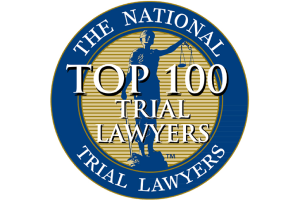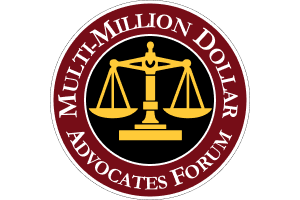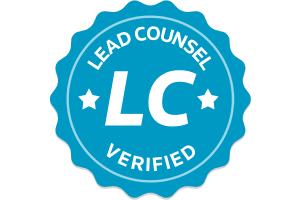for Over 25 Years
Motorcycle Accident Attorneys in Los Angeles California
Motorcycle Accident in Los Angeles Resources
- Motorcycle Accident Statistics
- What to Do After a Motorcycle Crash in California
- Common Causes of Southern California Motorcycle Crashes
- Common Injuries in Motorcycle Crashes
- Understanding the Role of Personal Injury Law in California Motorcycle Crash Claims
- How Much is My Motorcycle Accident Claim Worth?
- Importance of Seeking Legal Help
- Examples of Our Motorcycle Accident Attorney Client Success Stories
- Free Consultation and No Money Up Front
- Additional Resources
The year-round warmth and ocean breezes in Southern California make the area a significant draw for motorcycle enthusiasts. Both visitors and California residents ride motorcycles for the experience of feeling the wind rushing past and viewing the beauty of the desert, ocean, and cities. Some people also opt to purchase motorcycles as a more affordable transportation mode and excellent fuel economy.
Motorcycle Accident Statistics
Regardless of your reasons for riding motorcycles, it’s crucial to understand the risks you might face of being involved in a motorcycle accident. The National Highway Traffic Safety Administration (NHTSA) tracks motorcycle crash statistics. In 2021, the most recent year for which NHTSA data is available, 5,932 motorcyclists were killed in the U.S. To put this into perspective, data reported by the National Safety Council (NSC) reveals that motorcycles made up just 3% of all registered vehicles in the U.S. while accounting for 14% of all traffic fatalities. During that year, the NHTSA reports that motorcyclists were 24 times likelier to be killed in a collision and 4% likelier to be injured than occupants of other motor vehicles per vehicle mile traveled.
Motorcycle crash statistics demonstrate the significant risks motorcyclists face every time they ride. People who ride motorcycles should take specific steps to reduce their risk of accidents by practicing safe riding at all times. However, it’s not possible to prevent every collision even if you always exercise caution while riding. Unfortunately, you can’t control the actions of other motorists who are traveling near you on the highways in Southern California. Here’s what you should know about motorcycle collisions and what to do if you are seriously injured in a crash because of someone else’s negligent actions.
What to Do After a Motorcycle Crash in California
- Call 911 and Request both Police and Paramedics if You Are Injured: Even with protective gear, the motorcycle rider will usually sustain serious and even life threatening injuries. Calling for emergency help is crucial to assessing these injuries. If paramedics recommend that you go to an Emergency Room via ambulance, don’t be a “hero”. Refusing to go can not only impede diagnosis and treatment it can be used against you later by insurance companies with the argument “If you were really hurt, you would have gone to the hospital like the paramedics recommended.” Requesting Police presence is also vital. In any accident where personal injuries have been sustained, the police are required to prepare a Traffic Collision Report which you can obtain directly or through an attorney. You should ask the officer for the report number or “NCIC #” as well as his name and badge number.
- If possible, take pictures of the Accident Scene: If you are physically able to do so, take photos on your phone of the position of your bike when it came to rest, the position of any other involved vehicles, and property damages to all vehicles involved. If there are visible skid or tire marks or debris on the roadway, you should also photograph these.
- Do Not Delay Getting Medical Treatment: As stated above, refusing treatment is both detrimental to your health and your personal injury case. After being examined diagnosed and treated by paramedics and/or at the Emergency Room, don’t delay in seeking follow up treatment if recommended.
- Do Not Speak with Insurance Representatives Unless and Until You Consult and/or Retain an Attorney: Motorcycle accidents more so than just about any other type of personal injury claim, tend to be either denied or discounted based upon arguments of “comparative fault” (see discussion below. In other words, insurance companies are very eager to blame the biker for the crash. One tactic in doing so is to try to get recorded statements over the phone and ask questions that help them not you!
- Hire and Experienced Motorcycle Accident Attorney: It is always more beneficial to protect your legal rights and hire an attorney experienced in motorcycle accident claims. An experienced lawyer can help you obtain medical treatment with or without insurance, properly obtain evidence that helps bolster your case, organize and present evidence in the light most favorable to you and act as a buffer between you and an insurance adjuster bent on denying or reducing the value of the claim.
Common Causes of Southern California Motorcycle Crashes
A common misconception about motorcycle riders is that they are risk-takers who are likely to be at fault whenever they are involved in crashes. However, the NHTSA commissioned a comprehensive study into the causes of motorcycle accidents that revealed this belief as a myth. According to the Hurt report, 66% of multi-vehicle motorcycle crashes were caused by mistakes made by the other motorist instead of the motorcycle rider. Approximately 75% of crashes reviewed in the study involved collisions between motorcycles and passenger vehicles while 25% were single-vehicle motorcycle accidents involving road debris, road conditions, or striking an object.
In crashes with other cars, a primary factor is the size difference between the bike and the other vehicle. Since motorcycles are much smaller than passenger cars and larger vehicles, they are more difficult for drivers to see. Car, SUV, van, and truck drivers are also accustomed to checking for other passenger vehicles instead of motorcycles, and drivers sometimes fail to register the presence of a motorcycle when changing lanes, turning, or passing.
The following are some of the most common motorcycle crash scenarios in Southern California caused by motorists failing to notice motorcycles and the relevant traffic laws that apply to each:
- Left-hand turn collisions – These accidents occur when a motor vehicle driver turns left onto a street or highway from a side street or road without noticing an oncoming motorcycle. These accidents are also common when motorists execute left turns at intersections without checking for oncoming traffic, including motorcycles. The motorcyclist doesn’t have time to slow down or swerve to avoid the vehicle, resulting in the motorcycle crashing into the vehicle. Under Cal. Veh. Code § 21801, left-turning motorists must yield to oncoming traffic and will typically be at fault when they cause this type of collision.
- Unsafe lane change accidents – Drivers should check their mirrors and over their shoulders before changing lanes to make sure they have clearance to change lanes and that other vehicles are not in their blind spots. Unfortunately, many drivers fail to properly check for the presence of other vehicles when changing lanes and strike motorcyclists who are riding in adjacent lanes. In some cases, drivers might make sudden lane changes without signaling, providing a motorcyclist with no warning of their intention leaving them without enough time to slow to avoid a collision. Cal. Veh. Code § 22107 provides that motorists are not to change lanes to the left or right without checking for other vehicles and using the appropriate signal.
- Cars pulling out of parking lots in the path of motorcyclists – These types of collisions are similar to left-hand turn accidents but don’t always involve a motorist turning left. In this type of crash, the motorist fails to see a motorcyclist in front of them or rapidly approaching while pulling into the lane or attempting to cross it from a parking lot or side street. The motorist will either crash into the motorcycle or cause the cyclist to crash into the vehicle because of not having enough time to appropriately react. The relevant statute that applies to this scenario is Cal. Veh. Code § 21804, which provides that motorists must check for and yield to vehicles present in the traffic lane before attempting to enter or cross a road or highway from an alley, parking lot, or side street.
In addition to these common scenarios, the following driving behaviors are commonly involved in motorcycle crashes:
- Distracted driving (talking to others, texting while driving, checking GPS, reading emails, etc.)
- Impaired driving (driving under the influence of alcohol or drugs, including legal prescription medications)
- Speeding (including traveling too fast for the road or weather conditions)
- Aggressive driving
- Tailgating
- Drowsy driving
- Poorly maintained roads
Common Injuries in Motorcycle Crashes
Unlike passenger vehicles, motorcycles are not equipped with common safety features, including safety belts or airbags, and they also do not have a protective metal frame surrounding the riders. This means that motorcycle riders are left largely exposed to the environment around them. When they are involved in a crash, the physical forces of the collision are absorbed by the motorcyclist’s body. Because of this, motorcyclists typically suffer more severe injuries than the passengers of other involved vehicles, including the following types of injuries:
- Traumatic brain injuries (TBIs)
- Skull fractures
- Facial lacerations and fractures
- Neck fractures
- Spinal cord injuries
- Broken arms, wrists, legs, and ankles
- Rib fractures
- Organ damage
- Road rash injuries
- Avulsions
- Amputations
- Death
Motorcyclists might be thrown from their bikes in a collision and strike their heads on the pavement or on nearby objects. They also might be hit by other cars after being thrown from their bikes and dragged across the pavement before the vehicles can fully stop. Because of the general lack of protection, it’s critical for bikers to always wear DOT-approved helmets, motorcycle boots, jackets, gloves, and pants to provide some degree of protection and avoid severe injuries.
Understanding the Role of Personal Injury Law in California Motorcycle Crash Claims
When a motorcyclist suffers serious injuries in a collision with another vehicle in California, the victim can file a personal injury lawsuit against the driver who caused the crash and the resulting injuries and losses. In many cases, the driver of the other vehicle will be at fault, allowing the injured biker to pursue compensation through an injury claim. The following are a few tort laws that are important in motorcycle crash claims.
Statute of Limitations
Every state has statutes of limitations, which are laws that establish deadlines for filing varying types of legal cases. California’s personal injury statute of limitations is found in Cal. Code Civ. Proc. § 335.1, which provides a two-year limitation period for filing a lawsuit after an injury accident. Under this law, you have to file a lawsuit against the responsible party no later than two years after your accident unless a limited exception applies.
Exceptions to the statute of limitations exist for victims younger than 18 and those who were legally incompetent and unable to file a claim. In those situations, the statute of limitations will be tolled until the minor turns 18 or the incompetent victim’s competency is restored. At that time, the victim will have two years to file a lawsuit (from age 18 or from the date the victim’s competency was restored).
If you fail to file a lawsuit before the deadline, any claim that you later file will be time-barred. This means that the court will likely dismiss your case, and you won’t be able to pursue compensation for your losses through the courts.
California Negligence Law
Most motorcycle crash claims include negligence causes of action. Negligence is a legal term referring to when an individual or corporate entity acts unreasonably and causes someone else’s injuries. Plaintiffs in motorcycle accidents always have the burden of proof and must present evidence to show the following elements more likely than not occurred as the plaintiffs have argued:
- Duty – The plaintiff must prove the defendant owed a legal duty of care. All motorists have a duty to exercise the same degree of care and caution that a reasonably prudent driver would exercise under similar conditions.
- Breach – The plaintiff must show the defendant violated the legal duty of care in some way. For example, if the motorist was driving at a high rate of speed and collided with the motorcyclist because of not being able to stop in time, proving the driver’s excessive speed might be evidence of a breach.
- Causation – It’s not enough to prove the defendant owed a duty and violated it. The plaintiff must then present evidence showing the defendant’s breach of the duty of care directly or proximately caused the plaintiff’s accident and injuries.
- Damages – The plaintiff must prove the economic and non-economic losses they suffered because of the defendant’s negligence.
Comparative Negligence
An important law in California motorcycle accident cases is the comparative fault statute found at Cal. Civ. Code § 1714. Under this law, all individuals are considered responsible for their own degree of negligence in an accident. California adopted pure comparative negligence in the California Supreme Court’s decision in Li v. Yellow Cab, 13 Cal.3d 804, 532 P.2d 1226 (1975). Pure comparative negligence means that you can pursue compensation even if you were 99% at fault for your accident. However, your damages will be reduced by your percentage of fault, so filing a lawsuit when you were primarily at fault might not be financially feasible.
Pure comparative negligence is frequently raised by defendants as a defense to try to reduce how much compensation the plaintiffs might recover. For example, if the defendant can show the plaintiff was 40% at fault, the plaintiff’s net recovery will be reduced by 40%. By contrast, if the plaintiff can show the defendant was 100% at fault while the plaintiff was blameless, the plaintiff will be entitled to recover full damages.
How Much is My Motorcycle Accident Claim Worth?
- Out of Pocket Costs: These include medical expenses, cost of future medical treatment, rental vehicle while your bike is being repaired and the cost to either repair or replace your motorcycle.
- Pain and Suffering Damages: In addition, “pain and suffering” damages in California include money for past and future physical pain, mental suffering/loss of enjoyment of life/disfigurement/ physical impairment/inconvenience/grief/anxiety/humiliation/emotional distress.
Because out of pocket costs must be proven and because there is no set formula on how to calculate pain and suffering, it is important to retain a Los Angeles motorcycle accident attorney to prove up your case and maximize value. Showing how the accident impacted your life is crucial to getting maximum compensation.
Importance of Seeking Legal Help
While you are not required to hire a lawyer to file an injury lawsuit, it’s rarely a good idea to try to pursue legal action without help. The claims process is complex, and insurance companies have defense lawyers ready to vigorously defend against claims. When you retain a lawyer, this shows the insurance company you are serious about your claim, and the insurance company is likelier to settle your claim for more money than you might recover on your own.
Skilled motorcycle accident attorneys also understand the issue of juror bias against motorcyclists and how to gather and present evidence to overcome it. When you work with a lawyer, your attorney can handle all of the communication and negotiation with the insurance company for you while providing you guidance on the process.
Retaining an injury lawyer at the law firm of Steven M. Sweat, Personal Injury Lawyers, APC will not require you to pay an upfront fee or retainer. We work for a contingent fee and provide fee-free consultations. This means you can talk to us and learn about the merits of your case. If we agree to represent you, you won’t have to pay attorney’s fees until and unless we recover compensation for you through a settlement or jury verdict. Contact us today to request a free case evaluation by calling 866.966.5240.
Examples of Our Motorcycle Accident Attorney Client Success Stories
- Our client was a middle aged woman who had been riding motorcycles for almost 25 years without an accident. She was traveling towards a busy intersection in Los Angeles when a car made a left hand turn in front of her. The driver didn’t recall seeing or hearing anything at the time of the incident but, our client’s front tire hit his vehicle, causing her to wobble and go down. We hired accident reconstruction and other experts to estimate speeds and distances and obtained a significant six figure recovery.
- A 29 year old biker was traveling in the HOV lane on the 405 Freeway going to work. An impatient driver attempted to cross over the double yellow line and side-swiped her motorcycle sending her into the guard rail which resulted in her death. The driver fled the scene and would later claim to CHP that it was the motorcycle that hit him and not the other way around. Examining the accident scene and physical evidence and tracking a key witness resulted in a policy limits settlement of $1,250,000.00 to her family.
Free Consultation and No Money Up Front
Steven M. Sweat, Personal Injury Lawyers, APC offers free initial consultations and we charge no fees up front on all motorcycle accident claims. You pay nothing unless and until we recover money for you. For a free consultation with a California motorcycle attorney regarding any accident involving a motorcycle, moped, scooter or ATV, in the Golden State call our office. Toll Free Statewide: 866-966-5240 or in the Los Angeles area at 310-592-0445. We also have satellite locations throughout Southern California including the San Gabriel Valley, The Inland Empire, Orange County and San Diego.












